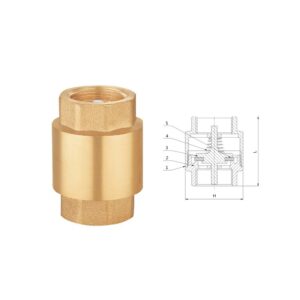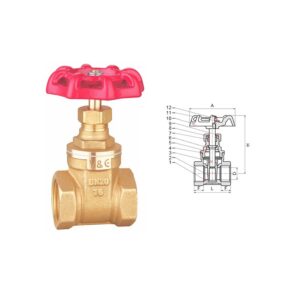Valve Selection for a system isn’t a simple one-size-fits-all process. It’s a complex decision-making task that requires both technical knowledge and a clear understanding of the operating environment. Each valve must be matched not only to the type of fluid it will control, but also to the pressure, temperature, flow rate, safety standards and control requirements of the overall system. A poor selection can lead to leakage, system failure, unnecessary energy loss or even hazardous working conditions.
This article—Part II of our valve selection series—focuses on the core principles behind valve selection. While Part I might focus on the procedural steps, this installment digs deeper into the technical basis and performance factors that should guide every valve choice. Whether you’re an engineer, technician or maintenance planner, understanding these foundational parameters will help you make smarter, safer, and more efficient decisions.
1. Define the Purpose and Control Requirements
Before choosing a valve, clearly define its function in the system:
-
What is the valve supposed to do?
Common roles include shut-off, throttling, diverting, backflow prevention or pressure relief. -
How should it be operated?
Will it be manually operated, or does it need automated control using electric, pneumatic or hydraulic actuators? For automation, consider the level of control required—on/off or modulating. -
How frequently will it operate?
High-cycling systems require valves with robust actuators and wear-resistant components.
2. Understand the Working Conditions and Medium Properties
The working environment directly affects valve material and design:
-
Working pressure and temperature:
Select valves that can safely operate within the maximum and minimum system limits. Pressure and temperature ratings must align with the application’s design conditions. -
Type of fluid or medium:
Evaluate the chemical nature and behavior of the medium:-
Corrosive fluids require stainless steel, Hastelloy or lined valves.
-
Abrasive fluids with solid particles may need hardened trim or ceramic internals.
-
Toxic or hazardous substances demand tight sealing, low emission designs and sometimes fire-safe certification.
-
Flammable or explosive media require explosion-proof actuators and anti-static designs.
-
High-viscosity fluids may affect flow characteristics and valve responsiveness.
-
-
Cleanliness of the medium:
Suspended solids or sludge can clog or damage certain valve types, especially globe or needle valves. Ball or gate valves may perform better in such cases.
3. Evaluate Flow and Sealing Performance Requirements
Each application has specific flow performance needs. When evaluating valves, focus on:
-
Flow resistance (Cv or Kv values):
This measures the valve’s capacity to allow fluid flow. A valve with low resistance (high Cv) allows higher flow with less pressure loss. -
Discharge capacity:
This refers to how much fluid the valve can pass through under certain conditions. It must meet system demands during peak flow. -
Flow characteristics:
This is how the valve responds as it opens or closes. For example:-
Linear flow change (equal change in valve opening = equal flow change)
-
Equal percentage (small opening changes cause small flow changes at first, then larger as it opens more)
-
Quick opening (immediate high flow as soon as valve opens)
-
-
Sealing performance and leakage class:
Especially critical in hazardous systems. Choose valves rated for the appropriate leakage class (Class IV to VI for control valves, for example). Soft-seated valves usually provide better sealing than metal-seated valves.
4. Match Installation Dimensions and Connection Standards
The valve must physically and mechanically integrate with the piping system. Consider:
-
Nominal diameter (DN or NPS):
Match the valve’s size with the pipeline’s nominal size for proper flow and pressure control. -
Connection method:
Flanged, threaded, welded, clamp-type—each has advantages depending on the pressure rating, service type and maintenance needs. -
Face-to-face dimensions and weight limitations:
Ensure the valve fits in the available space, especially in retrofits. Some valves (e.g. diaphragm valves) are more compact, while others (e.g. globe valves with actuators) require more room. -
Orientation and access:
Make sure there’s space for installation, actuation, inspection and maintenance.
5. Consider Reliability, Safety and Service Life
Performance over time matters as much as initial specs:
-
Expected service life:
Choose valves designed for long-term use in the given conditions. High-cycle applications or harsh environments may require specialized materials and construction. -
Reliability in extreme conditions:
Make sure the valve maintains its function under temperature swings, vibration, corrosive atmosphere or dirty service. -
Maintenance requirements:
Some valves (e.g. ball valves) are low-maintenance. Others (e.g. control valves with positioners) may need regular calibration. -
Explosion-proof and fire-safe features:
Especially important in refineries, chemical plants or gas service. Verify compliance with ATEX, IECEx or other applicable standards.
6. Special Considerations for Control Valves
When the valve is used not just for open/close functions but for modulating control, you must define additional control-related parameters:
-
Operation type:
On/off control or throttling control (modulating) -
Flow range requirements:
Define the maximum and minimum flow rates the valve must accommodate. -
Pressure drop across the valve:
Know the expected pressure drop during normal operation and at shutoff. These values are critical for valve sizing and for avoiding cavitation or flashing. -
Inlet pressure range:
Specify the maximum and minimum inlet pressures. Too high can damage the valve; too low can cause choking or unstable flow. -
Control signal and feedback method:
For modulating valves, determine the signal type (e.g. 4–20 mA, digital) and whether position feedback or diagnostics are required.
Final Thoughts
Valve selection isn’t just about following a chart or checklist. It’s about understanding the system, the medium, the environment and how the valve will perform under all expected (and unexpected) conditions. By diving deep into these core principles and parameters, you move beyond generic product selection and into engineering decisions that protect people, equipment and processes.
If you missed Part I of this series, be sure to check it out for a step-by-step breakdown of the valve selection process. And if you need help specifying valves for a specific application, I’m here to help.





